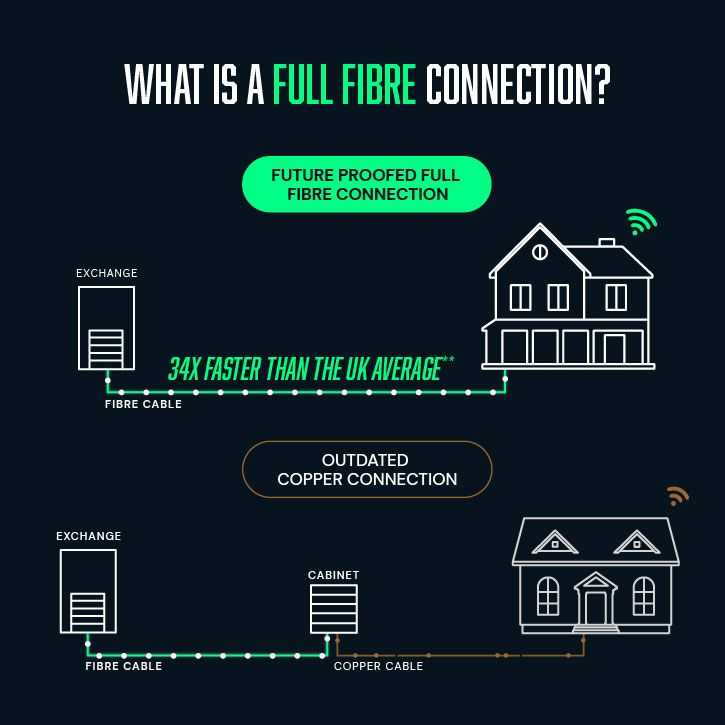May 4, 2023
With the number of internet enabled devices in our homes rising all the time and our dependency on online services increasing daily, a reliable and fast broadband connection is, without a doubt, necessary. This is where full fibre broadband comes in.
When choosing the right broadband package for you, it's very helpful to understand what full fibre actually is, how fast it is, how it works and how accessible it is. In this article, our YouFibre experts answer questions customers have and explain why it’s time to go full fibre in your home.
What is full fibre broadband?
Full fibre is a type of broadband connection that uses fibre optic cables all the way from the exchange to your home or office. In the simplest of terms, full fibre broadband provides the fastest internet connection that you can currently have.
Unlike older broadband connections that use copper wires, full fibre broadband uses fibre optic cables made of glass or plastic - data can be transmitted much faster and over longer distances without loss of signal strength, resulting in a more stable and reliable connection.
How does full fibre broadband work?
It might sound like science fiction, but full fibre works by transmitting data using light signals that travel through the fibre optic cables. The cables are made up of tiny strands of glass or plastic, which are thinner than human hair. The light signals bounce off the walls of the cables and travel at almost the speed of light, resulting in a faster and more efficient connection.
What is the difference between full fibre and fibre broadband?
The main difference between full fibre and fibre broadband is the type of cable used to deliver it. Fibre broadband, also known as FTTC (Fibre to the Cabinet), uses fibre-optic cables to connect your area from the exchange to street cabinets, but the connection from the cabinet to your home or business is still made of copper wires. This hybrid connection often results in slower speeds – in fact, the greater the distance from the cabinet to the property, the slower the broadband speed is.
In contrast, full fibre is a type of FTTP (Fibre to the Premises) broadband, where only fibre optic cables are used between your exchange and premise.
How fast is full fibre broadband?
Full fibre broadband offers speeds of up to 10Gbps. A huge advance in capability, especially when comparing full fibre speeds with the average FTTC broadband of 50.4 Mbps (Ofcom).
In more practical terms, a full fibre package at home allows you to download and upload large files in seconds, stream high-quality 4K videos on multiple devices at the same time without buffering, and enjoy lag-free online gaming.
To find out if YouFibre is available in your area, visit our broadband availability checker page. If we aren’t yet live in your area, this page will also allow you to register your details so that we can keep you in the loop when we have good news to share.
